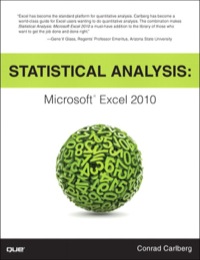INTRO: Over-land Trucking and Freight has a long-established and mutually beneficial business relationship with a major international automotive parts company, FHP Technologies. Management at FHP has approached Over-land with a request to provide additional routes that are important to the efficiency of its supply chain. Over-lands management wishes to nurture the business relationship with FHP but is concerned about the available capacity to service the new routes, potential risks, and profitability associated with FHPs request.
PROPOSAL/BACKGROUND: Management at FHP has asked Over-land to consider adding two dry van loads per week; each load would require 1,500 round-trip miles. Because FHP is a long-term client with a strong financial position, the companys management has asked for a very favorable rate of $2.15 per mile including FSC and all miscellaneous fees. Roger believes the potential volume of freight from FHP can be used to grow Over-lands business and profitability. There is also risk associated with not taking the new lines. If Over-land does not accept the new routes, another trucking line will, thus building loyalty with FHP. FHP is a stable, solvent company that presents no question of collection, thus ensuring a reliable cash ow. If FHP decides to restructure its supply chain in the future, Over-land could land itself in the undesirable position of holding dedicated assets (trucks and trailers) for routes that no longer exist. The owners aversion to increased debt levels further exacerbates concerns about acquiring additional xed assets. Perhaps Over- land could service the initial demand with existing equipment. But, as additional routes are added in the future, Over-land must acquire more tractor-trailer rigs or consider outsourcing the miles by using independent contractors.
QUESTION:
- Over-land can increase capacity in different ways to accommodate the additional loads if they accept FHPs contract. Why might Over-land use an independent operator (variable cost of $65/mile) over purchasing a rig and hiring a driver for a lower variable cost ($1.39/mile)? Calculate at what point (in miles) Over-land would be indifferent between purchasing a new rig and using an independent operator.

Exhibit 1 presents Over-land Trucking and Freights income from operations for the year ending December 31, 2013.
Exhibit 2 Over-land Balance Sheet Over-land Trucking and Freight Balance Sheet For the year ending December 31, 2013 Assets Current Assets Cash $200,000 300,000 Accounts Receivable Total $500,000 Property Plant and Equipment Land Buildings Accumulated Depreciation Buildings Tractors, Trailers, and Equipment Accumulated Depreciation 1,000,000 3,000,000 (1,250,000) 18,650,000 (4,750,000) Total $16,650,000 Total Assets $17,150,000 Liabilities and Equity Current Liabilities Accounts Payable Taxes Payable Current Portion of Long-Term Debt Total Current Liabilities 150,000 65,000 35,000 $250,000 1,865,000 $1.865,000 $2,115,000 Long-Term Liabilities Notes Payable Total Long-Term Liabilities Total Liabilities Owner's Equity Contributed Capital Retained Earnings Total Owner's Equity 3,550,000 11,485.000 $15,035,000 Total Liabilities and Owner's Equity $17,150,000 Generally Accepted Accounting Principles (GAAP) but presents costs by behavior. Exhibit 2 presents Over-land Trucking and Freight's balance sheet for the year ending December 31, 2013. Exhibit 1 Income from Operations (All financial information in the case has been scaled and disguised for educational purposes.) Over-land Trucking and Freight Income from Operations For the year ending December 31, 2013 Revenue FYE 12/31/2013 Line Haul Fuel Surcharge Miscellaneous Total Revenue $20,925,280 4,950, 160 450,120 $26,325,570 Per Mile $1.86 0.44 0.04 $2.34 Variable Expenses 0.06 0.78 Insurance Fuel Oil Lubricants Tolls Parts and Small Tools Hourly Wages: Drivers Trailer Pool Expense Total Variable 675,120 8,775,190 112,700 112,550 787,630 4,950,160 255,120 15,638,480 0.02 0.02 Fixed Expenses Insurance General Liability Physical Damage Workers Compensation Health Insurance Security Depreciation Salaries, Benefits (Garage) Salaries, Benefits (Office) Bad Debt Expense Permits Rental Equipment Payroll Taxes Accounting Fees, Supplies, Computer Maintenance Miscellaneous Total Variable 112,620 225,010 226,000 224,500 111,750 2,137,500 675,000 1,012,520 113,500 111,520 1,013,000 562,500 112,350 337,510 6,975,280 Income from Operations $3,681,810 Exhibit 2 Over-land Balance Sheet Over-land Trucking and Freight Balance Sheet For the year ending December 31, 2013 Assets Current Assets Cash $200,000 300,000 Accounts Receivable Total $500,000 Property Plant and Equipment Land Buildings Accumulated Depreciation Buildings Tractors, Trailers, and Equipment Accumulated Depreciation 1,000,000 3,000,000 (1,250,000) 18,650,000 (4,750,000) Total $16,650,000 Total Assets $17,150,000 Liabilities and Equity Current Liabilities Accounts Payable Taxes Payable Current Portion of Long-Term Debt Total Current Liabilities 150,000 65,000 35,000 $250,000 1,865,000 $1.865,000 $2,115,000 Long-Term Liabilities Notes Payable Total Long-Term Liabilities Total Liabilities Owner's Equity Contributed Capital Retained Earnings Total Owner's Equity 3,550,000 11,485.000 $15,035,000 Total Liabilities and Owner's Equity $17,150,000 Generally Accepted Accounting Principles (GAAP) but presents costs by behavior. Exhibit 2 presents Over-land Trucking and Freight's balance sheet for the year ending December 31, 2013. Exhibit 1 Income from Operations (All financial information in the case has been scaled and disguised for educational purposes.) Over-land Trucking and Freight Income from Operations For the year ending December 31, 2013 Revenue FYE 12/31/2013 Line Haul Fuel Surcharge Miscellaneous Total Revenue $20,925,280 4,950, 160 450,120 $26,325,570 Per Mile $1.86 0.44 0.04 $2.34 Variable Expenses 0.06 0.78 Insurance Fuel Oil Lubricants Tolls Parts and Small Tools Hourly Wages: Drivers Trailer Pool Expense Total Variable 675,120 8,775,190 112,700 112,550 787,630 4,950,160 255,120 15,638,480 0.02 0.02 Fixed Expenses Insurance General Liability Physical Damage Workers Compensation Health Insurance Security Depreciation Salaries, Benefits (Garage) Salaries, Benefits (Office) Bad Debt Expense Permits Rental Equipment Payroll Taxes Accounting Fees, Supplies, Computer Maintenance Miscellaneous Total Variable 112,620 225,010 226,000 224,500 111,750 2,137,500 675,000 1,012,520 113,500 111,520 1,013,000 562,500 112,350 337,510 6,975,280 Income from Operations $3,681,810








